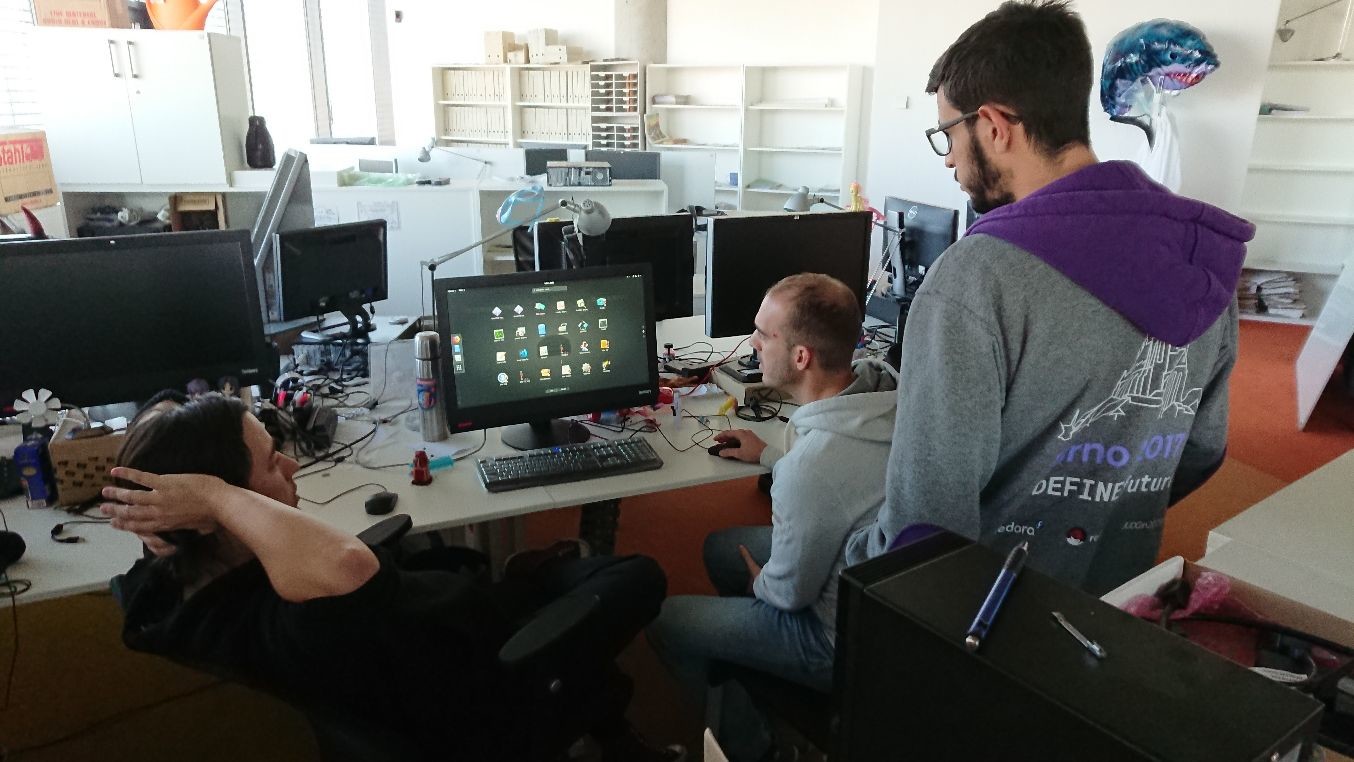LinuxDays, the biggest Linux event in the Czech Republic, took place at the Faculty of Information Technology of Czech Technical University in Prague. The number of registered attendees was a bit lower this year, it could be caused by municipality and senate elections happening on Fri and Sat, but the number got almost to the 1300 mark anyway.
Besides a busy schedule of talks and workshops the conference also has a pretty large booth area and as every year I organized the Fedora one. I drove by car to Prague with Carlos Soriano and Felipe Borges from the Red Hat desktop team on Saturday morning and we were joined by František Zatloukal (Fedora QA) at the booth.

Our focus for this year was Silverblue and modularity. I prepared one laptop with an external monitor to showcase Silverblue, the atomic version of Fedora Workstation. I must say that the interest of people in Silverblue surprised me. There were even some coming next day saying: “It sounded so cool yesterday and I couldn’t resist and install it when I got home and played with it in the night…” With Silverblue comes distribution of applications in Flatpak and there was a lot of user interest in this direction as well.

I was hoping for more interest in modularity, but people don’t seem to be so aware of it. It doesn’t have the same reach outside the Fedora Project as Flatpak does, it’s not so easy to explain its benefits and use cases. We as a project have to do a better job selling it.
The highlight of Saturday was when one of the sysadmins at National Library of Technology, which is on the same campus, took us to the library to show us public computers where they run Fedora Workstation. It’s 120 computers with over 1000 users (in the last 90 days). Those computers serve a very diverse group of users, from elderly people to computer science students. And they have received very few complaints since they switched from Windows to Fedora. Also they’ve hit almost no problems as sysadmins. They only mentioned one corner case bug in GDM which we promised to look into.

It was also interesting to see the setup. They authenticate users against AD using the SSSD client, mount /home from a remote server using NFS. They enable several GNOME Shell extensions by default: AlternateTab (because of Windows users), Places (to show the Places menu next to Activities)… They also created one custom extension that replaces the “Power Off” button with “Log Out” button in the user menu because users are not supposed to power the computers off. They also create very useful stats of application usage based on “recently-used” XML files that GNOME creates to generate the menu of frequently used applications. All computers are administrated using Ansible scripts.

The only talk I attended on Saturday was “Why and How I Switched to Flatpak for App Distribution and Development in Sandbox” by Jiří Janoušek who develops Nuvola apps. It was an interesting talk and due to his experience developing and distributing apps on Linux Jiří was able to name and describe all the problems with app distribution on Linux and why Flatpak helps here.
On Sunday, we organized a workshop to teach to build flatpaks. It was the only disappointment of the weekend. Only 3 ppl showed up and none of them didn’t really need to learn to build flatpaks. We’ll have the same workshop at OpenAlt in Brno and if the attendance is also low, we’ll know that workshop primarily for app developers is not a good fit for such conferences.
But it was not a complete waste of time, we discussed some questions around Flatpak and worked on flatpaking applications. The result is GNOME Recorder already available in Flathub and Datovka in the review process.
The event is also a great opportunity to talk to many people from the Czech community and other global FLOSS projects. SUSE has traditionally a lot of people there, there was Xfce, FFMPEG, FreeBSD, Vim, LibreOffice…
Leave a Reply